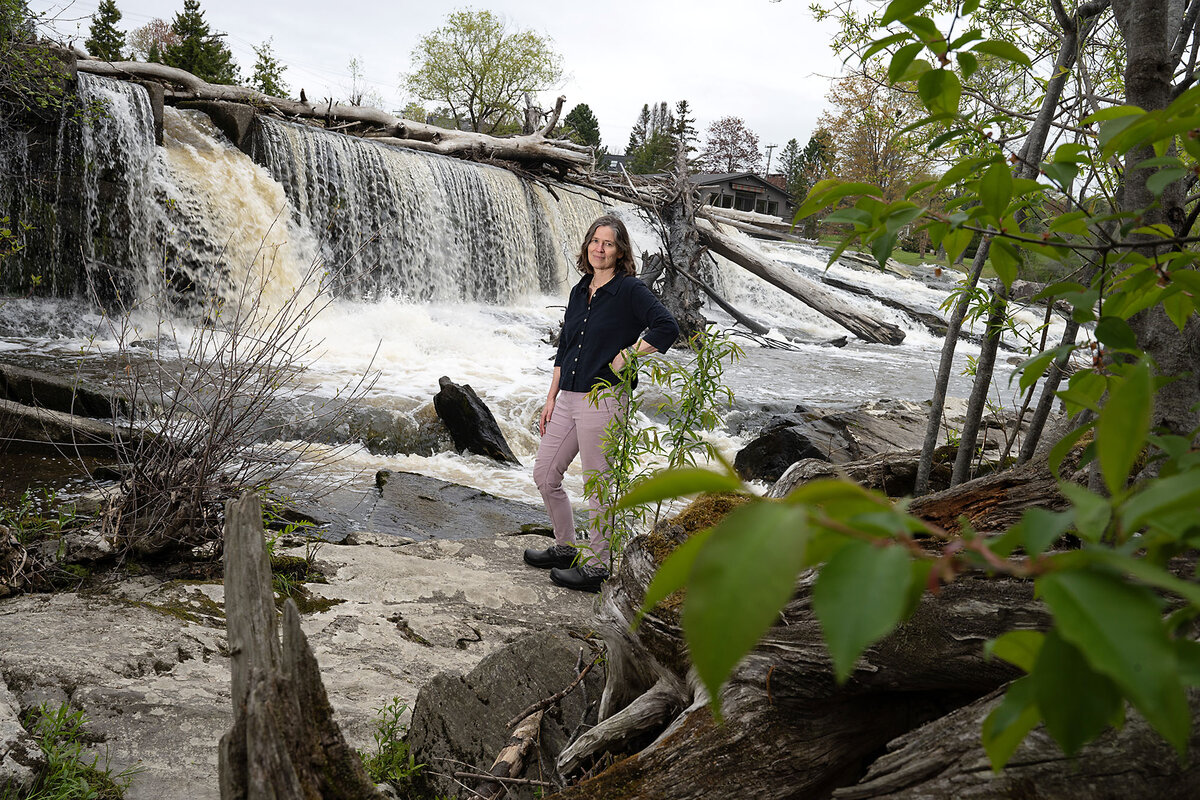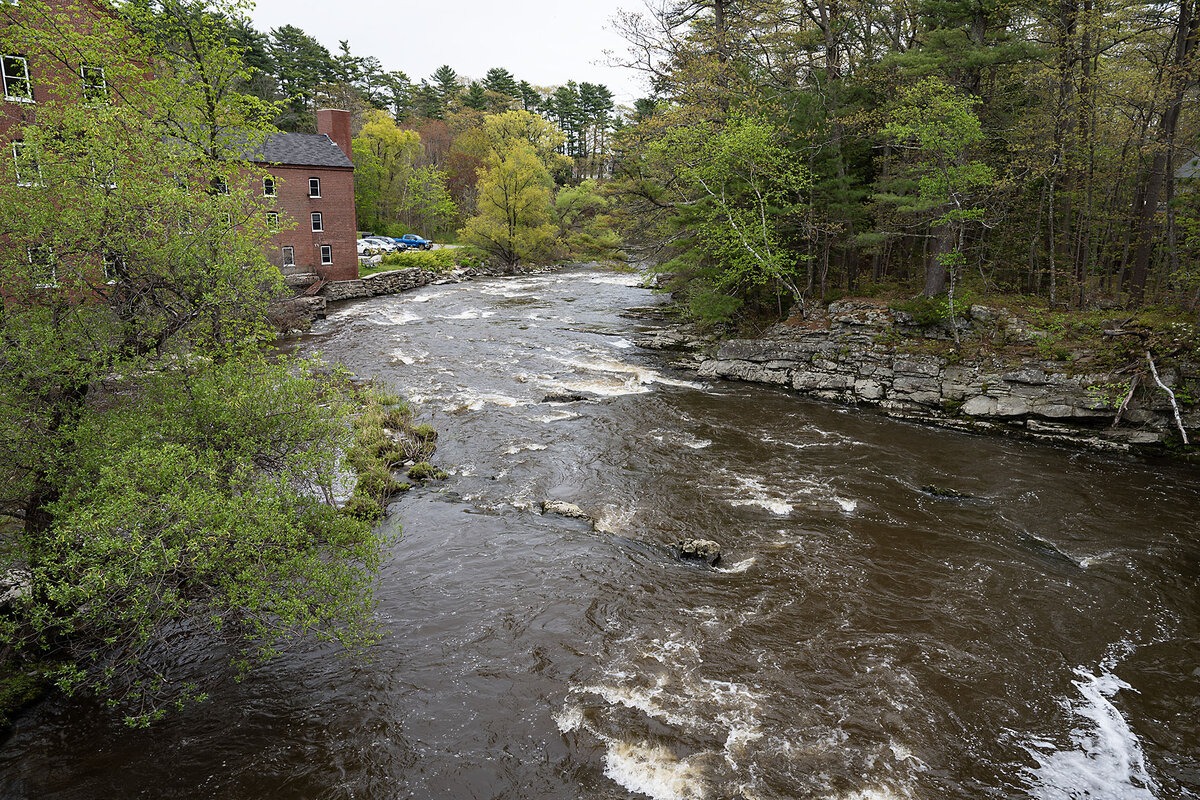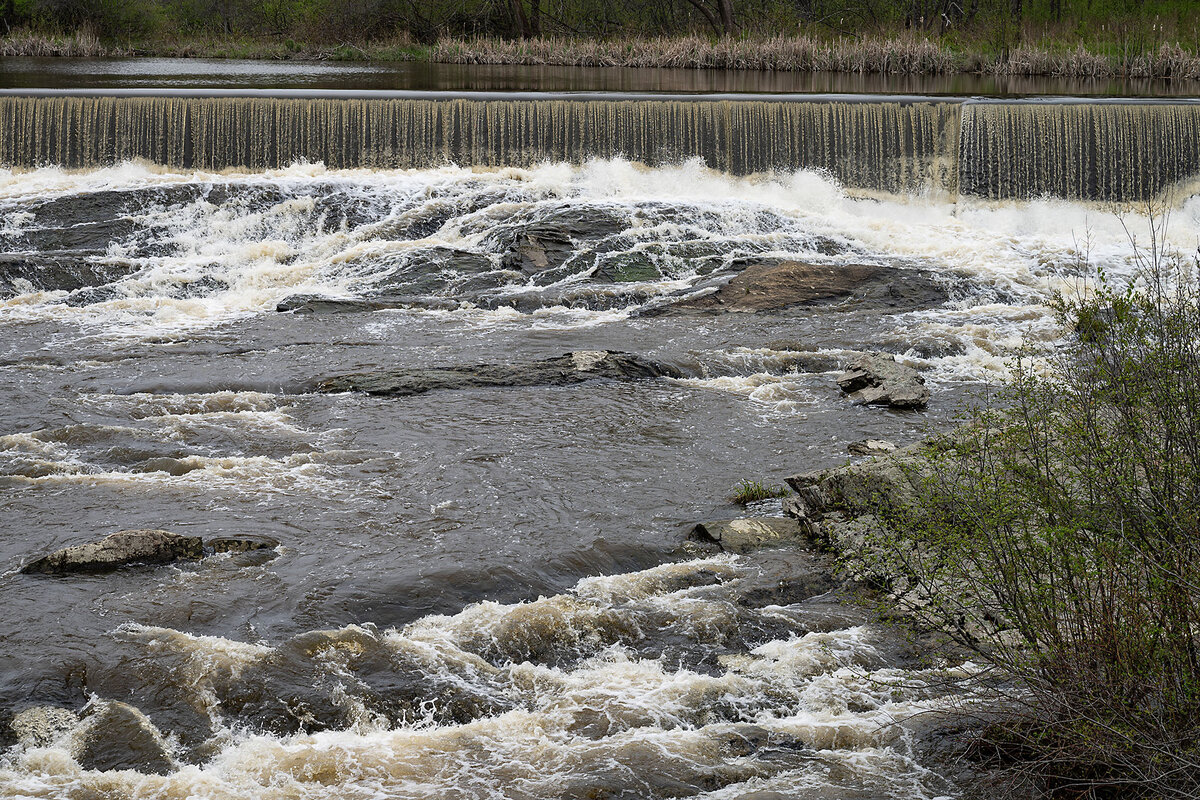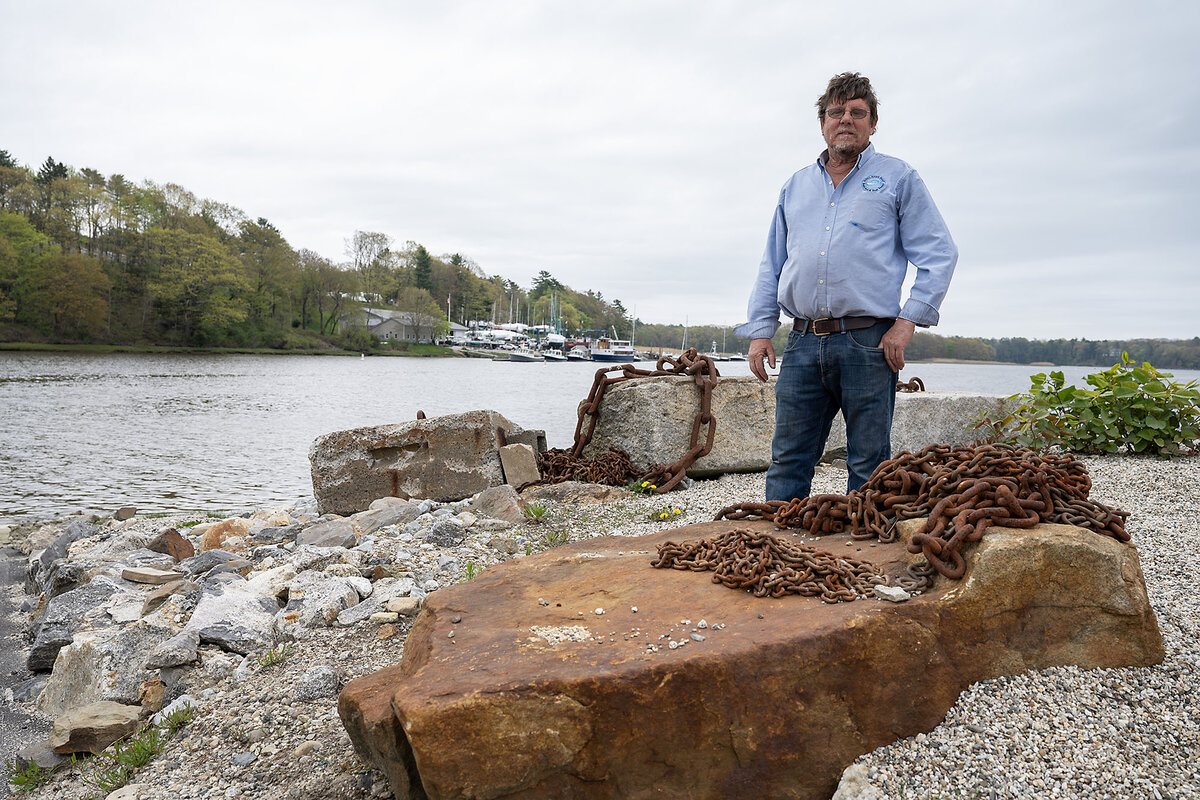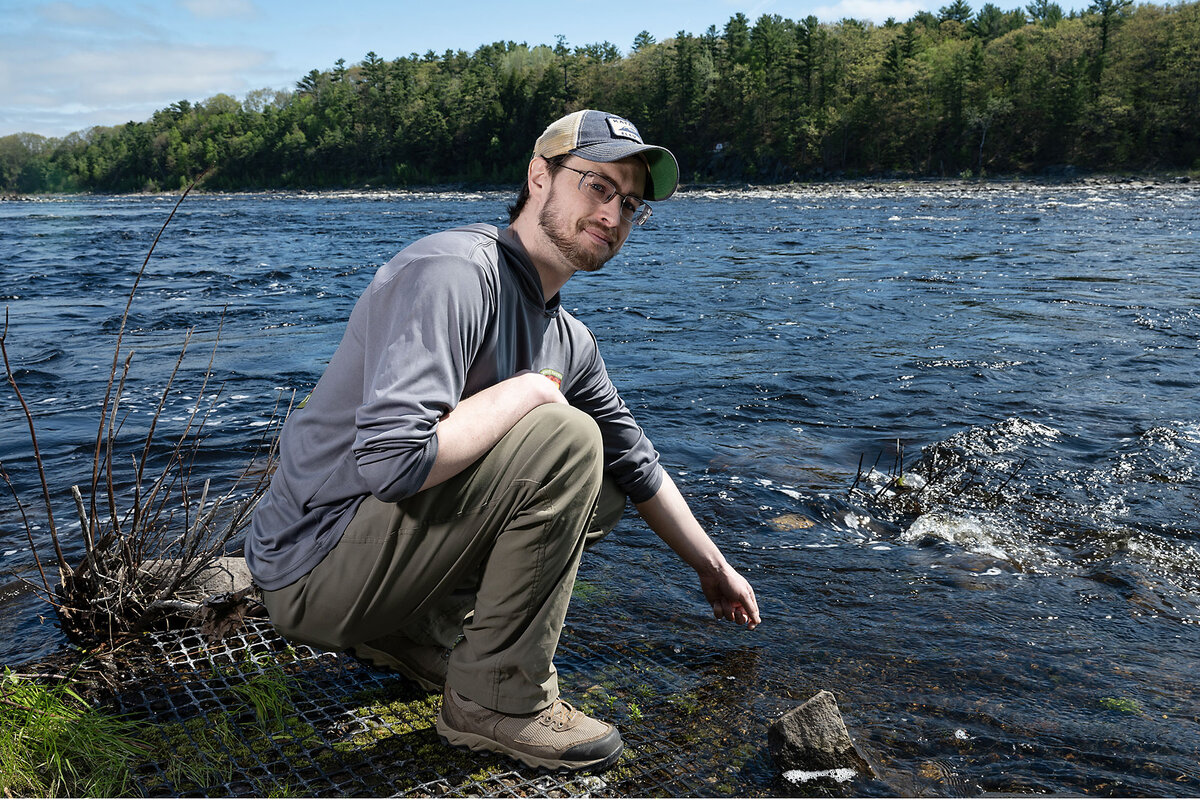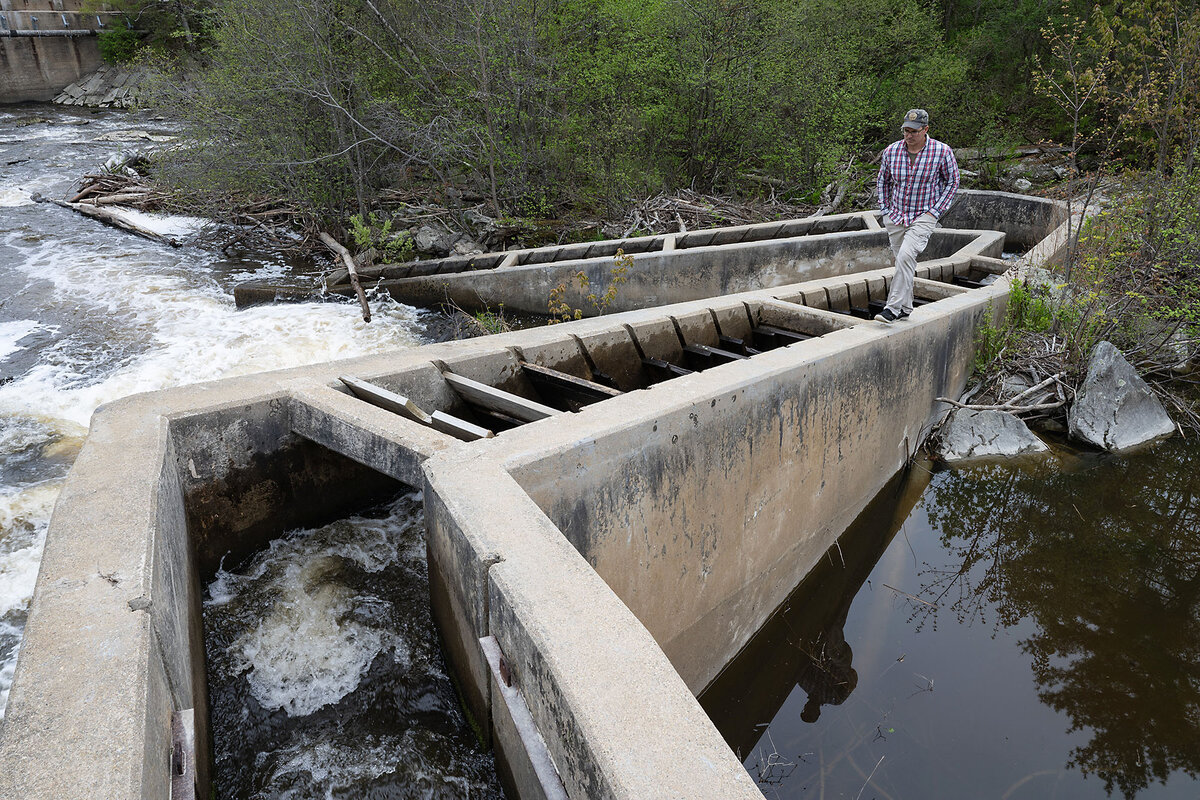Go, fish. How removing old New England dams is opening rivers to new wildlife.
Loading...
| Yarmouth and Veazie, Maine
The silvery water of the Royal River glistens as sunlight strikes its surface on an overcast afternoon. The modest waterway flows an easy 39 miles from southern Maine’s Sabbathday Lake to the Atlantic coast at Casco Bay, attracting kayakers, paddleboarders, and great blue heron.
But to Landis Hudson, a Yarmouth resident who describes herself as “a bit of a river therapist,” the Royal is no idyllic symbol of a bucolic New England. It’s a broken, flagging ecosystem, mainly due to two dams – the Bridge Street and East Elm Street dams – that block migratory fish from their natural habitat.
That may be about to change. Ms. Hudson, who runs the environmental nonprofit , believes the Royal can be part of New England’s recent river revolution: the removal of thousands of small dams – once used to power mills during the Industrial Revolution – that have clogged local waterways for over 250 years.
Why We Wrote This
One Maine town, built on water-powered mills during the Industrial Revolution, is joining a quiet revolution that’s clearing the path for healthier New England rivers.
Despite the Trump administration’s reversals of eco-friendly protections, she and other environmental stewards say that they see a path to healthier New England rivers.
“When I look out at the water ... I see something that is not really alive,” says Karin Orenstein, a Yarmouth town councilor who has pushed to remove the Royal’s dams. “I’m imagining a river that is more oxygenated, has the return of fish to it, and has all kinds of other animals.”
New England is the in the United States, with over 14,000 dams. Rivers here are small, and it’s rare for dams to reach higher than 40 feet, says Andy Fisk, northeast regional director at American Rivers, an environmental nonprofit. That may be minuscule compared with the West’s grand hydroelectric plants, which can tower thousands of feet into the air. But it’s all the same to fish, which can no more cross a 40-foot-high dam than a 400-foot one.
Damming even small waterways has an outsize environmental impact. So does removing the structures, which are ubiquitous in New England’s roughly 19,000 miles of rivers and streams.
“A relatively small stream that you could wade across,” Mr. Fisk says, if unblocked, can support breeding journeys for “tens of thousands” of migratory fish.
New Englanders seem to be waking up to that reality. Between 2010 and 2024, at least 170 dams were removed in this region, according to data from American Rivers. That’s more than double the number of removals during most of the preceding century.
Yarmouth jumped on that trend in January, when, after more than a decade of debate, its Town Council to remove the Bridge Street and East Elm Street dams. The move is to provide habitat for 35,000 alewives, a type of river herring common in Maine but now largely missing from the Royal.
Multiple reports from the , the U.S. Army Corps of Engineers, an , and conservation nonprofits have concluded that the dams have significantly reduced the number of fish in the river.
Yarmouth has plenty of models to follow. One such guide star has been the removal of the Veazie and Great Works dams on Maine’s Penobscot River. That project, which brought millions of fish back to some 2,000 miles of habitat, has been hailed as a huge success.
But removing one dam – not to mention two – is time-consuming and expensive. And in Yarmouth, like much of the region, many people see the dams as cherished pieces of local history.
Still, to Yarmouth’s leadership and many residents, the trade-offs of removing the dams will be worth it if it means a healthier river – a sentiment shared by a growing number of communities throughout the region.
“You can have some variation of this conversation on every river going up the coast of Maine,” Ms. Hudson says. “[On] every river, there’s somebody paying attention to the barriers, and there’s some group of people trying to improve the situation.”
The challenges of change
Although this small, affluent Portland suburb is now mostly known for its annual Clam Festival, Yarmouth was once a thriving hub of manufacturing. The Bridge Street and East Elm Street dams, , powered a textile mill and a shoe factory, respectively.
That history is part of why Alan Dugas, who owns and operates a boatyard in Yarmouth’s marina, hopes the dams stay. He says his grandmother, who immigrated to Yarmouth from Canada, worked in the Bridge Street textile mill.
Like his grandmother, Mr. Dugas depends on the river for his livelihood. He and other business owners worry that removing the dams could release toxins and excess sediment into the marina, requiring the local boatyards to pursue time-intensive and costly remedies.
“When we have issues with dam removal, we’re not trying to be difficult,’’ says Deborah Delp, another boatyard owner. “We just have a lot of challenges.”
Last year, the U.S. Army Corps of Engineers that the project posed little to no long-term risk of contaminating the marina or increasing sedimentation. Earlier reports from other groups also failed to detect high levels of toxins.
Despite the low risk of contamination, Yarmouth plans to help the boatyards’ efforts to “obtain and finance” insurance to protect them financially should those analyses prove incorrect, according to the town’s on removal.
Removing even these small dams is expensive. The costs for the Yarmouth project may reach as high as $5.7 million, according to the U.S. Army Corps of Engineers’ study. Should it move forward, the town would foot at least 15% of the bill, estimated as high as $860,000. Yarmouth’s resolution stipulates that no taxpayer money can be used to fund the removals, meaning the town would need government grants or private funds.
Dam removals also keep with another local tradition that differs from the one Mr. Dugas holds dear: Maine has a rich history of innovative water reforms. The 1999 removal of the Edwards Dam, near the state capital of Augusta, set for subsequent dam removals elsewhere. And it was pollution in southern Maine’s Androscoggin River that, in 1972, inspired the Clean Water Act – a landmark law that still governs waterways today.
Many Yarmouth residents seem eager to continue that clean water advocacy. More than three-quarters of the over 100 public comments collected by the town during its study of removal plans were supportive.
“The river,” Ms. Orenstein says, “is the heart of the town.”
Fish tales
Farther north, the Penobscot River shows what a successful dam removal looks like.
Standing in Riverside Park in Veazie, Maine, Cody Dillingham points across the river to a boulder painted with white and red graffiti. The embellishment marks what used to be the eastern end of the Veazie Dam, says Mr. Dillingham, a fisheries biologist with the Penobscot Nation, an Indigenous tribe.
That dam was removed in 2013 as part of the (PRRP), which brought together over a dozen nonprofits, government agencies, and the Penobscot Nation to boost fish passage in the river. The group also removed the Great Works Dam, upriver from Veazie, in 2012, and installed a fish passage channel at a third in 2016.
The PRRP took well over a decade to come to fruition. But the number of alewives migrating in the Penobscot jumped from 222 in 2010 to nearly 5.7 million in 2024, according to the Maine Department of Marine Resources.
The river is “a living, breathing entity with rights,” says Chuck Loring, director of the tribe’s Department of Natural Resources and a Penobscot Nation citizen. “It’s just really important to tribal folks that the connection is improving.”
A model for consideration
Some species, such as salmon, have been slower to recover due to other dam blockages and environmental pressures, including a warming climate.
Still, the Penobscot serves as a beacon of hope for river restorers. In California, the group that undertook in U.S. history, on the Klamath River, itself after the Maine alliance.
“We have turned the corner on the Penobscot River,” says Dan McCaw, another Penobscot Nation fisheries biologist. “If people really prioritize healthy rivers, clean water, and robust fish runs, dam removal is by far the best way to accomplish that.”
Back in Yarmouth, Mike Brandimarte strolls along a fishway at the Bridge Street Dam, where he uses a GoPro camera to check for fish. Today, he doesn’t see many. But he’s optimistic he’ll see more when the dams come out.
An engineer, he admires the human ingenuity that went into building the dams. But times have changed, he says. “We’re at a point where it’s time to give things back a little, too.’’



